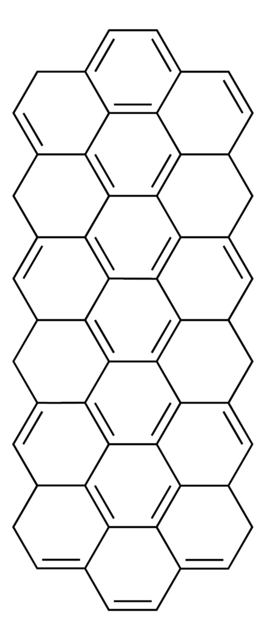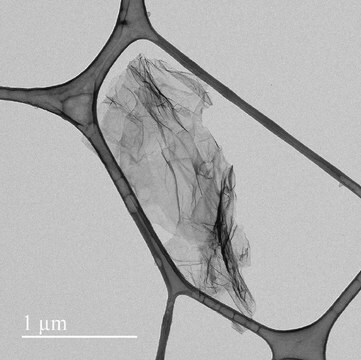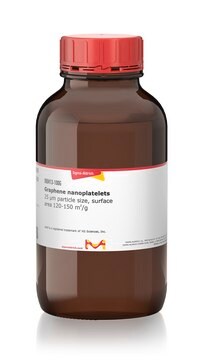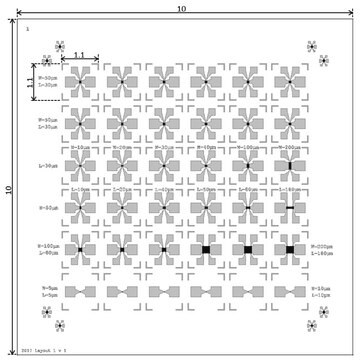推荐产品
描述
Made by reductive splitting of CNT, edge terminated with H.
品質等級
化驗
≥90% carbon basis (EA)
寬度
0.25-0.35 μm ± 0.05-0.1 μm
SMILES 字串
NC.NC.NC.NC.NC.NC.NC.NC.NC
InChI 密鑰
DXIFQVRACSPGSU-UHFFFAOYSA-N
正在寻找类似产品? 访问 产品对比指南
一般說明
Graphene nanoribbons (GNR) are narrow strips of graphene with abundant edges and high aspect ratio. The edge functionalization can alter the chemical properties of the GNR to afford them good dispersibility and strong interfacial interactions with various materials. Such properties have made GNR suitable for producing a variety of composites, particularly as conductive fillers that provide percolation at a comparatively small mass loading due to the high aspect ratio and high conductivity. GNR have been used in sensors, energyconversion/storage devices, and electrochemical, photochemical and thermoelectrical systems. They have also been intensively studied for biochemical and biological applications such as bioimaging, biosensing, DNA sequencing, and neurophysiological recovery.
應用
Graphene nanoribbons (GNR) made by reductive splitting of carbon nanotubes possess highly reactive edge carbon atoms. The carbanions have been passivated by methanol to yield this H-terminated graphene nanoribbons product. This reductively splitted graphene nanoribbons preserve high electrical conductivity, and enable them good candidates for electrodes in neurophysiological recording, conductive filler in batteries, and heater in de-icing devices.
訊號詞
Warning
危險聲明
危險分類
Eye Irrit. 2 - STOT SE 3
標靶器官
Respiratory system
儲存類別代碼
11 - Combustible Solids
水污染物質分類(WGK)
WGK 3
閃點(°F)
Not applicable
閃點(°C)
Not applicable
Kyle A Ritter et al.
Nature materials, 8(3), 235-242 (2009-02-17)
Graphene shows promise as a future material for nanoelectronics owing to its compatibility with industry-standard lithographic processing, electron mobilities up to 150 times greater than Si and a thermal conductivity twice that of diamond. The electronic structure of graphene nanoribbons
Melinda Y Han et al.
Physical review letters, 98(20), 206805-206805 (2007-08-07)
We investigate electronic transport in lithographically patterned graphene ribbon structures where the lateral confinement of charge carriers creates an energy gap near the charge neutrality point. Individual graphene layers are contacted with metal electrodes and patterned into ribbons of varying
Mohammad A Rafiee et al.
ACS nano, 4(12), 7415-7420 (2010-11-18)
It is well established that pristine multiwalled carbon nanotubes offer poor structural reinforcement in epoxy-based composites. There are several reasons for this which include reduced interfacial contact area since the outermost nanotube shields the internal tubes from the matrix, poor
我们的科学家团队拥有各种研究领域经验,包括生命科学、材料科学、化学合成、色谱、分析及许多其他领域.
联系技术服务部门![聚[(9,9-二正辛基芴基-2,7-二基)-alt-(苯并[2,1,3]噻二唑-4,8-二基)] average Mn ≤25000](/deepweb/assets/sigmaaldrich/product/structures/428/661/1c4ebb98-9d51-48c0-96c7-e556ca425aa4/640/1c4ebb98-9d51-48c0-96c7-e556ca425aa4.png)








